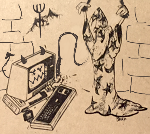|
If you live in a major metro area, you can probably get a report online for the specific treatment plant your water comes from.
|
|
|
|

|
| # ? Jun 5, 2024 04:25 |
|
Also depending on where you live, they may pull from multiple sources depending on demand, etc. I spent money to mine tested at Ward Labs, I think it was 30 bucks, and just say eh it's close enough when doing my chemistries. I say this as a chemist in an environmental testing laboratory.
|
|
|
|
|
calandryll posted:Also depending on where you live, they may pull from multiple sources depending on demand, etc. I spent money to mine tested at Ward Labs, I think it was 30 bucks, and just say eh it's close enough when doing my chemistries. Yeah, you really don't need perfect precision. My water's Ca has fluctuated from like 32 to like 36 ppm over a few years, which literally does not matter.
|
|
|
|
Ok thanks! It turns out there was a more detailed report, but it was linked from a water quality commission associated with the town and not on the town's website.
|
|
|
|
So, it's been a couple of years but I'm pretty keen to get back into brewing. I've got a bit more space now and absolutely cannot be bothered messing around with bottling this time around so I'm going to get a kegging setup going. I'm planning on getting tooled up for 5 gallon brews but I want to do a couple of smaller volume practice batches to start off. Provided everything is purged properly, is there any reason you wouldn't want to put a 2.5 gallon brew in a 5 gallon keg?
|
|
|
|
Other than wasting extra CO2, I don't think so? I guess if you're planning on using the danby minifridge that's popular for DIY kegerators, it can be more of a pain to use the picnic taps on a 5gal keg vs 2-3 ones because they're taller which makes coiling the lines back up a bit more of a pain. Honestly, I don't know your drinking situation, but you may not even want to do 5 gallon batches. I for sure don't because it'd mean I have to go through ~40 pints or ~53 can equivalents of a beer before I can brew something else, and that takes forever on my own. Plus, I like to have 2 kegs at any given time so I can have two different things to drink. This is basically why I switched to 2-3 gallon batches even though I have a bunch of 5 gal kegs that now sit unused
|
|
|
|
Rozzbot posted:So, it's been a couple of years but I'm pretty keen to get back into brewing. The only reason I wouldn't is it's about the same amount of work to make 5 gallons. But other than that you can keg condition with easy to get spunding valves now, so you can also just keg condition to cut down on the extra CO2 you'll need to purge. It's really the extra CO2 and increased risk of oxidation that would put me off doing it.
|
|
|
|
True, I hadn't considered the wasted CO2 that will be filling the empty volume. I might stick with 2.5 gallon batches since once I'm into it I prefer the variety and brewing more regularly. Can always get a bigger keg later down the line!
|
|
|
|
62 year old house with galvanized steel pipes in the attic
In Petrochemical nasty swamp water Houston. I just nope out of that with RO water from a machine for 30 cents a gallon.
|
|
|
|
Yeah I need to start doing the big jugs. Mostly I use spring water from the store. Eventually I'll start with RO or distilled and build my water profile but that seems like work.
|
|
|
|
Boonoo posted:Also, anyone here do cider? I just found this thread and haven’t had time to poke around it too much. I "accidentally" made pear cider last year (perry) by having too low a starting gravity for the pear wine I usually make -- not enough usable pears, but didn't adjust the water amount enough. I had to add a bunch of sugar to get it up to a fermentable gravity, so it came out a little sweeter than I like, but in the end it turned out great. Shout out to the people in this thread who helped me figure out how to bottle it with priming sugar -- it got perfectly bubbly after a while. Speaking of which: It's cider time again, and I had a better harvest to work with this year. I may not have added quite as much water as I should've, though. Either that or I'm not getting my gravity readings right. This is also my first year attempting to use a refractometer -- I'm doing readings with both that and my usual hydrometer in order to try to check my work. Anyway, here's how my readings have been going (gravity / Brix): 8/13/2022, before pitching yeast, wort at 84° F Refractometer: 1.115 / 27 Hydrometer: 1.10 / 27 8/28/2022, transferring to secondary, 75° F Refractometer: 1.025 / 6 Hydrometer: 0.990 / 0 The refractometer is supposed to be calibrated for 68°F, and the hydrometer for 60°F. I'm curious about those initial readings being very high, even after doing the necessary corrections (which don't really change the numbers hugely) -- but more curious about the large divergence in the second readings. Also I guess I'm not entirely sure what corrections I need to be doing for the refractometer temperature, if any -- that info doesn't quite seem to exist online, which leads me to believe I'm barking up the wrong tree.
|
|
|
|
Mmmm trub I've started fermenting in kegs, and so far so good. If you're thinking about fermenting in kegs using a floating dip tube, spend the extra  on a decent one. I'm a big fan of the FLOTit 2.0, and I've also heard good things about the clear beer draught system. on a decent one. I'm a big fan of the FLOTit 2.0, and I've also heard good things about the clear beer draught system. For something less gross, here's a WCIPA after dry hop number one. Dry Hop number two is 2.5 oz total of Simcoe, CTZ, and Cryo Amarillo, Cascade, Centennial, and Simcoe for five gallons.  This weekend I'm going to brew Jhet's ESB recipe from a couple of pages back.
|
|
|
|
Sir Lemming posted:I'm curious about those initial readings being very high, even after doing the necessary corrections (which don't really change the numbers hugely) -- but more curious about the large divergence in the second readings. Also I guess I'm not entirely sure what corrections I need to be doing for the refractometer temperature, if any -- that info doesn't quite seem to exist online, which leads me to believe I'm barking up the wrong tree. Are you using a calculator to correct for the alcohol in the second refractometer measurement? Here's one https://www.brewersfriend.com/refractometer-calculator/ You do need to correct for temperature with refractometers as well, but the amount of liquid is so small that it should be room temperature in no time.
|
|
|
|
Bark! A Vagrant posted:Are you using a calculator to correct for the alcohol in the second refractometer measurement? Here's one https://www.brewersfriend.com/refractometer-calculator/ You do need to correct for temperature with refractometers as well, but the amount of liquid is so small that it should be room temperature in no time. it's always this
|
|
|
|
Bark! A Vagrant posted:Are you using a calculator to correct for the alcohol in the second refractometer measurement? Here's one https://www.brewersfriend.com/refractometer-calculator/ You do need to correct for temperature with refractometers as well, but the amount of liquid is so small that it should be room temperature in no time. Ok, I did come across this calculator but I didn't really get how to use it. Aside from entering the original Brix and the current (for now I'll consider it "final") Brix, what am I doing? Is the Wort Correction Factor what I'm missing? Since I already did a comparison with a hydrometer initially and they read the same, it kind of sounds like I might not need to do that correction anyway -- or at least, not by much. (I know their methodology says to whip up a bunch of test worts and take the average values and stuff, which maybe I'll have time for some day, but not any time soon I don't think.) If I'm using this correctly it means my Brix is actually -6 which uh, doesn't exactly fill me with confidence that I've cracked this nut. Then again, my hydrometer reading was kind of like that too.
|
|
|
|
Sir Lemming posted:Ok, I did come across this calculator but I didn't really get how to use it. Aside from entering the original Brix and the current (for now I'll consider it "final") Brix, what am I doing? Is the Wort Correction Factor what I'm missing? Since I already did a comparison with a hydrometer initially and they read the same, it kind of sounds like I might not need to do that correction anyway -- or at least, not by much. (I know their methodology says to whip up a bunch of test worts and take the average values and stuff, which maybe I'll have time for some day, but not any time soon I don't think.) Your hydrometer will be accurate in your final reading. The refractometer needs to be adjusted for the alcohol content refracting differently than water + solids does. But if you don't know the correction factor, it'll be off until you do. My old one was 1.04 which makes a large difference. The final hydrometer reading doesn't cause me any pause. It's what I'd expect for a project made of almost only simple fermentable sugars. Once you figure out your correction factor, then you'll have better results with the refractometer after fermentation.
|
|
|
|
YVH has a pretty decent sale if you're in the market for Azacca, Chinook, BRU-1, Cashmere, or Zappa hops $10/lb of pellets. https://yakimavalleyhops.com/collections/5-for-10Sir Lemming posted:Ok, I did come across this calculator but I didn't really get how to use it. Aside from entering the original Brix and the current (for now I'll consider it "final") Brix, what am I doing? Is the Wort Correction Factor what I'm missing? Since I already did a comparison with a hydrometer initially and they read the same, it kind of sounds like I might not need to do that correction anyway -- or at least, not by much. (I know their methodology says to whip up a bunch of test worts and take the average values and stuff, which maybe I'll have time for some day, but not any time soon I don't think.) It's this, it's definitely this. Without doing the calibration you'll be off a little, but even without it the hydrometer and calculated refractometer readings are just .016 gravity apart. The initial readings were .015 apart.
|
|
|
|
Baronash posted:I brewed a gallon batch of this on Saturday, though I had to switch out the Omega yeast with a dry yeast. With that and the gallon of cider I'm making today, I'll have 4 batches fermenting at once. I'm forcing myself to hold off on any more until I get the first two batches bottled, because otherwise I'm going to end up with way more carboys than I could realistically use on a regular basis. What yeast did you use and how'd it turn out?
|
|
|
|
I'm getting ready to use some Achouffe yeast for a tripel (WLP550/WY3522/B45 Gnome/Escarpment Ardennes), and I'll of course need to make a starter. Will I need to leave a ton of headspace for krausen in the flask, or is it more subdued than other Belgian strains? I ask because if I make a 2L starter I should have plenty of yeast to pitch, but it doesn't leave much headroom so it could get very messy and I may lose yeast if it spills out of the flask, as I've had happen to me in the past. As an alternative, is there any downside to making the starter in a large sanitized cooking pot as opposed to a flask if I need tons of headroom?
|
|
|
|
The biggest problem will be being able to use a stir bar if you were planning to do so. Otherwise you can just get a large bucket 1 gallon is big enough to step. That strain makes a lot of krausen, so Id go big in that 1gal 5L flask range.
|
|
|
|
A drop or two of Fermcap in the starter flask will also help a whole lot.
|
|
|
|
Jhet posted:The biggest problem will be being able to use a stir bar if you were planning to do so. Otherwise you can just get a large bucket 1 gallon is big enough to step. That strain makes a lot of krausen, so Id go big in that 1gal 5L flask range. Jo3sh posted:A drop or two of Fermcap in the starter flask will also help a whole lot.
|
|
|
|
Did my first homebrew this weekend! We went with a BIAB smash. Rhar 2 row and cascade. Verdant IPA yeast. I think things went relatively well. The main issue is that it didn't reduce like we expected during the boil (and I think I gave the grain bag a squeeze at the end of the sparge so we ended up starting the boil with more wort than we had intended). Then, we opted to do a slightly longer boil--72 mins instead of 60--to reduce things just a pinch. In retrospect I'd have probably just kept to the 60 minute hop schedule, fermented it in a bigger container, and dealt with it being a bit weaker than expected. I also should have used the 5 gallon instead of the 3 gallon carboy. By the time I went to bed it had started bubbling, and by morning I had to swap the airlock for a blow off tube. I was pretty nervous about hitting the initial gravity reading since I was crushing the malt using my motorized flour mill, but I think I got it just about right given the extraction (is 70% a decent target for BIAG?). I'll probably pick up some crushed malt soon so I have something better to compare things to while dialing in the mill. I'll also need to build a hopper for the mill. It does about a pound of grain just fine, but going through five pounds was kind of a pain. Here's what we tried. 5lbs rahr 2 row 2.7 gallons (had intended 2.5) OG 1.047/8 (the initial target was 1.052 with the 2.5 gallons and 70% extraction. It was 1.048 with the 2.7ish gallons) IBU 34.3 (expected ibu with 2.5 gallons and a 60 minute boil was 30.8) Like I mentioned above, we boiled for 72 rather than 60 minutes, so that impacted all but our last hop addition. 72 minutes .3oz Cascade 4.6% aa 42 minutes .3oz Cascade 4.6% aa 27 minutes .4oz Cascade 4.6% aa 1 minute .5oz Cascade 4.6% aa 2-3 oz cascade dry hopped for a few days in a few days. (Should I wait to hit my target gravity, or can I start dry hopping if I'm close--say 1.012 or 14 instead of 1.010)?) The big question I have is about flavor change from initial wort to finished beer. This was quite a bit more bitter than we expected. The initial taste was kind of like a 60-80 ibu IPA. Could my calculations have been that far off? I was just plugging numbers into the brewers friend calculator, and I don't have any real sense for how accurate that might be. Or will that initial bitterness subside as it ferments, gets dry hopped, and bottle conditions? We'd probably be fine drinking it if it stays that bitter, but it definitely wasn't what we expected. Homebrew is pretty fun! Now I see why folks get into it. I already want to do another brew next weekend.
|
|
|
|
Yeah, you adding that much in the way of hops during the boil is definitely going to give you bitterness. All the haze kids only hop late/whirlpool/dry these days, so if that's what you were after you'll probably end up with a different beer to what you expected. That said yes, beer will change a lot between unfermented wort and what ends up in your glass. And each brew will teach you stuff!
|
|
|
|
Kaiho posted:Yeah, you adding that much in the way of hops during the boil is definitely going to give you bitterness. All the haze kids only hop late/whirlpool/dry these days, so if that's what you were after you'll probably end up with a different beer to what you expected. To figure the hop schedule I essentially just googled the ibu of beers I liked, then played around with the calculator to hit that target (and I think just kinda copied other hop schedules that space things out with an eye toward later additions). We werent aiming entirely at a modern hazy, and wanted something vaguely reminiscent of a dry hopped apa. I was mostly just surprised because the bitterness was more prominent than Id expect based on the number. Im really looking forward to trying it out to see how it changes over the ferment then after the dry hopped. Yeah, the turn around time on this seems great. Im looking forward to trying out a recipe and mixing up the malts. Itll be nice to have a more concrete target, too.
|
|
|
|
I think most beers need a couple, maybe even three weeks to come into their own after packaging. Hoppy ones can be pretty green and even astringent right off the bat.
|
|
|
|
thotsky posted:I think most beers need a couple, maybe even three weeks to come into their own after packaging. Hoppy ones can be pretty green and even astringent right off the bat. I can manage 10 days turn around bottle conditioned, but before that its still green. And then it really hits its stride after 14 days. This is with S04. Most other yeasts need longer. US05 could do that same turn. The good news is that for home brewing the time in fermenting and conditioning isnt that big a deal normally. The hop schedule in question should turn out pretty good and Ive used one close to that. The only thing I do differently these days is compress the bitter to one addition and most everything else in the last 5 minutes. I dont miss anything from not having those middle additions. Only reason I use those is for finishing a stout with herbal hops at about 20.
|
|
|
|
Yeah, I only use a mid boil addition (25 minutes) if I am specifically going for spicy/earthy/herbal notes which, looking at my recipes, means only in my lagers, my classic saison and my robust porter. Event then it is rarely more than an ounce. I think it will probably turn out nice though, like Sierra Nevada of old maybe. thotsky fucked around with this message at 08:49 on Sep 13, 2022 |
|
|
|
From the beers I've made, tasting the unfermented wort is usually more bitter than the finished beer, and it's kind of a harsh bitterness. I definitely remember tasting most of the beers I've made and thinking "poo poo that's way too bitter" and then it's quite nice once it's fermented and chilled. Not to say that your beer won't be too bitter, just that it'll taste different in one way or another once it's fermented. Ok question of my own: does anyone have a good solution for wrapping up kettles to keep temperature (not on a gas burner obviously)? I've got a 5.5gal kettle that I use for 2.5 gallon batches and I run it on a portable induction stove. It can do a good rolling boil, but benefits from some wrapping to reduce some of the heat loss. I'm also wanting to do some brew-in-a-bag so having a good wrap during the mash would be helpful, especially since it's a smaller kettle.
|
|
|
|
Eeyo posted:From the beers I've made, tasting the unfermented wort is usually more bitter than the finished beer, and it's kind of a harsh bitterness. I definitely remember tasting most of the beers I've made and thinking "poo poo that's way too bitter" and then it's quite nice once it's fermented and chilled. Not to say that your beer won't be too bitter, just that it'll taste different in one way or another once it's fermented. You want something like this: https://www.lowes.com/pd/Reflectix-R-21-33-3-sq-ft-Unfaced-Reflective-Roll-Insulation-16-in-W-x-25-ft-L/1014123
|
|
|
|
Eeyo posted:From the beers I've made, tasting the unfermented wort is usually more bitter than the finished beer, and it's kind of a harsh bitterness. I definitely remember tasting most of the beers I've made and thinking "poo poo that's way too bitter" and then it's quite nice once it's fermented and chilled. Not to say that your beer won't be too bitter, just that it'll taste different in one way or another once it's fermented. Thats good to hear. And about just simplifying the hop schedule as folks mentioned above. Should be fun to play around with in the future. Edit: Hey! It did taste a lot different. Activity had slowed way down, so I checked the gravity, and it was down to 1.09. The bitterness has backed way way off. Now its more of a pleasant taste that lingers a bitalthough definitely more astringent then Id like. Cant wait to see how it progresses with dry hopping and then bottle conditioning. Boonoo fucked around with this message at 00:55 on Sep 14, 2022 |
|
|
|
I have a bit of a conundrum on my hands; my last two hoppy beers haven't smelled or tasted really hoppy despite a good amount of hops. One was dry hopped, and the other was not (Jhet's ESB recipe). Here are some clues:
Any ideas? Any other considerations I could be missing? I'm about to be out of town for two weeks, and I'm tempted to leave both of them dry hopping while I'm away in a bid to salvage them.
|
|
|
|
48 hours will normally extract as much from the hops as can be expected, I would maybe turn, shake or swirl the fermenter halfway through, but you should be good. For sure, using spiders, mesh filters for your hops etc can reduce the extraction some, but I would be much more worried about oxidation, especially if there is a weird sweetness. Get any cardboard/sherry/stale flavors and aromas? Any discoloration/browning?
|
|
|
|
Bark! A Vagrant posted:I have a bit of a conundrum on my hands; my last two hoppy beers haven't smelled or tasted really hoppy despite a good amount of hops. One was dry hopped, and the other was not (Jhet's ESB recipe). Here are some clues: Did you use those whole cone hops you got? It's tricky the way they act compared to pellets, or compared to brand new hops for the year too. The spider won't do anything negative in the boil unless you try to put too much into it. The same would happen in a mesh container in the dry hopping. The key to the extraction of flavor is the contact time they have with the fermenting wort/beer. It's why some breweries will bubble CO2 or otherwise agitate during dry hopping. The more it moves over the hops, the better the flavor extraction does with it. If you're not getting the bittering you want either, that would change the perceived bitterness/sweetness. So if it's not bitter enough, it'll also probably taste sweeter than the gravity is telling you it should be. For these, if you haven't bottled yet, you can make a bitter hop tea and try to amend if you really want. Otherwise, just maybe try using fresher hops or increasing the quantity you're using as well.
|
|
|
|
I just started my first cold crash using a mylar balloon I captured CO2 with. I've got my chest freezer down to 35 degrees, and I was wondering what's the general time frame for how long it takes until the wort has absorbed as much CO2 as it will? It's a 5 gal batch with an OG of 1.060 if that makes a difference.
|
|
|
|
Jaggedstagger posted:I just started my first cold crash using a mylar balloon I captured CO2 with. I've got my chest freezer down to 35 degrees, and I was wondering what's the general time frame for how long it takes until the wort has absorbed as much CO2 as it will? It's a 5 gal batch with an OG of 1.060 if that makes a difference. Cold crashing takes 24-72 hours depending on your yeast and how quickly it likes to flocculate. Carbonation depends on the pressure you have your CO2 set. The mylar balloon CO2 isn't going to be able to do anything but balance the pressure within the system. So if you don't have a CO2 tank with higher pressure pushing it into the keg it's not going to carbonate. You'll probably get a little bit more into solution as it cools, but not enough to make up the difference.
|
|
|
|
Jhet posted:Cold crashing takes 24-72 hours depending on your yeast and how quickly it likes to flocculate. Thanks. I wasn't trying to carbonate it with the balloon, just avoid oxygen being sucked back in as the temperature dropped. Previously I had just kept an airlock on during cold crashing and thought I'd give the balloon a try to lessen the oxygen exposure.
|
|
|
|
These were both done with pellets. I don't think it's oxidation; I've been really consciously trying to get cold-side oxidation down to a minimum. They were both fermented in kegs, and for dry hops it was a closed transfer to a keg that had been purged by filling it with starsan and using the off-gas from fermentation to push the liquid out of the keg. No sherry or cardboard taste, and the color is still good. It's a malty sweetness that would probably be nice if the beers were appropriately bitter.  I tried adding extra gypsum to a pint of the IPA, and it helped a little with the bitter taste. Did nothing for the aroma unsurprisingly. If the boil weren't actually a boil, could that be the reason? It's definitely possible I didn't have a strong enough boil. How rapidly does isomerization decrease with temperature as you get below boiling? For reference, the IPA's hop bill: 0.19 oz (31 IBU) Hopshot (CO2 Extract) 48.91% Boil 75 min 1 oz (46 IBU) Warrior 14.6% Boil 45 min 0.25 oz (12 IBU) Amarillo Cryo 14.9% Boil 45 min 0.35 oz (18 IBU) Centennial Cryo 18.5% Boil 30 min 1 oz (3 IBU) Cascade 5.5% Aroma 20 min hopstand @ 180 °F 1 oz (6 IBU) Centennial 10% Aroma 20 min hopstand @ 180 °F 1 oz (7 IBU) Simcoe 13% Aroma 20 min hopstand @ 180 °F 0.4 oz (3 IBU) Cryo Amarillo 13.5% Aroma 20 min hopstand @ 180 °F 1 oz Cryo Simcoe 13% Dry Hop day 4 0.5 oz Cascade Cryo 5.5% Dry Hop day 4 0.5 oz Columbus/Tomahawk/Zeus (CTZ) 15.5% Dry Hop day 4 0.3 oz Cryo Centennial 14% Dry Hop day 4 1 oz Simcoe 13% Dry Hop day 6 0.5 oz Cryo Cascade 5.5% Dry Hop day 6 0.5 oz Columbus/Tomahawk/Zeus (CTZ) 15.5% Dry Hop day 6 0.3 oz Cryo Centennial 14% Dry Hop day 6 0.3 oz Cryo Amarillo 13.5% Dry Hop day 6 Kinda baffled by how this could've happened. I guess next time I'll make sure it's a vigorous boil, and make sure I agitate regularly while dry hopping.
|
|
|
|
Give it a couple of weeks in the keg, maybe it will improve. Maybe you have a cold :p
|
|
|
|

|
| # ? Jun 5, 2024 04:25 |
|
As a style, Extra Special Bitter is also kind of a misnomer. It's more of a balanced malt/hop profile than an IPA or any number of those highly hopped American styles.
|
|
|

























